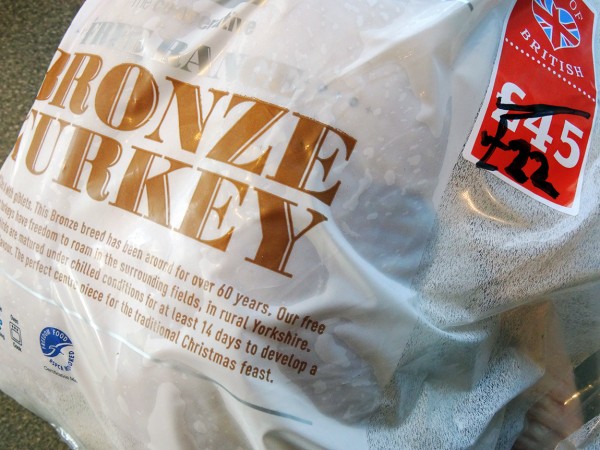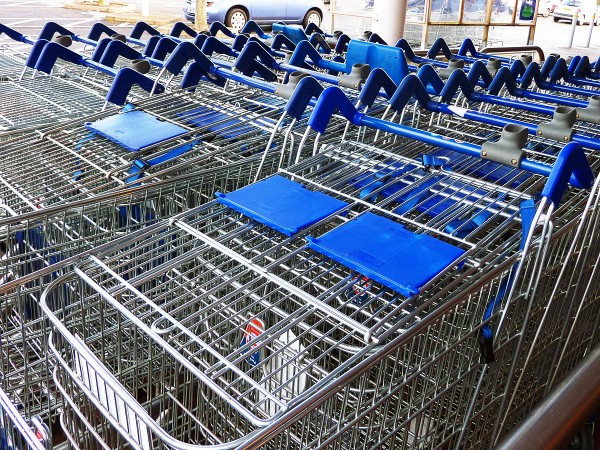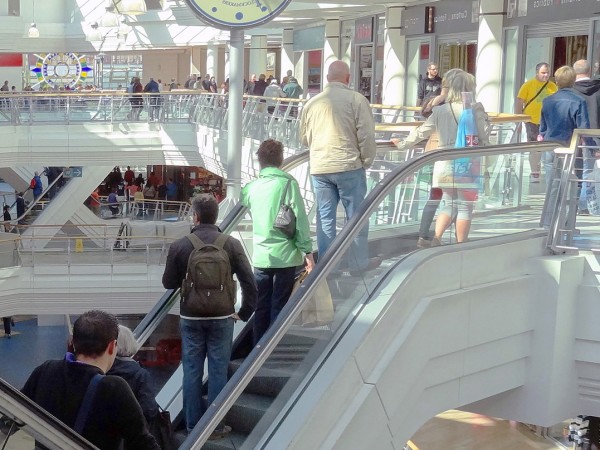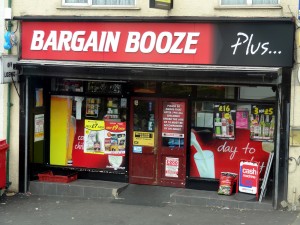 According to the supply and demand model, we would expect the price of turkeys to be high at this time of year. After all, last Christmas in the UK over 10 million turkeys were consumed and, therefore, this high level of demand should cause prices to rise. This is certainly what happens in other markets when there is a substantial increase in demand.
According to the supply and demand model, we would expect the price of turkeys to be high at this time of year. After all, last Christmas in the UK over 10 million turkeys were consumed and, therefore, this high level of demand should cause prices to rise. This is certainly what happens in other markets when there is a substantial increase in demand.
However, evidence from Thanksgiving in the USA suggests that this might not be the case. According to this article from the New York Times, data suggests that the price of frozen turkeys in the US falls by around 9% between October and November, coinciding with the substantial increase in demand for Thanksgiving celebrations. The article then goes on to suggest a number of plausible demand and supply-side explanations for this fall in price.
Turkey Economics 101: Why turkeys are so darn cheap this time of year Culinate (25/11/13)
Why Does Turkey Get Cheaper Around Thanksgiving? Slate, Matthew Yglesias (21/11/12)
Questions
- How elastic do you think the demand for turkeys will be at Christmas?
- What type of products are well suited to being used as loss-leaders?
- Which of the explanations for the increase in prices do you find most convincing?
- What evidence might be useful to distinguish between the different explanations?
 How important are emotions when you go shopping? Many people go shopping when they ‘need’ to buy something, whether it be a new outfit, food/drink, a new DVD release, a gift, etc. Others, of course, simply go window shopping, often with no intention of buying. However, everyone at some point has made a so-called ‘impulse’ purchase.
How important are emotions when you go shopping? Many people go shopping when they ‘need’ to buy something, whether it be a new outfit, food/drink, a new DVD release, a gift, etc. Others, of course, simply go window shopping, often with no intention of buying. However, everyone at some point has made a so-called ‘impulse’ purchase.
There is only one article below, which is from the BBC and draws on data released from the National Employment Savings Trust’s survey. This report suggests that British people spend over £1 billion every year on impulse buys – purchases that are not needed, were not intended and are often regretted once the ‘high’ has worn off. Often, it is the way in which a product is advertised or positioned that leads to a spontaneous purchase – seeing chocolate bars/sweets at the tills; a product offered at a huge discount advertised in the window of a shop; 2 for 1 purchases; points for loyalty etc. All of these and more are simple techniques used by retailers to encourage the impulse buy. As consumer psychologist, Dr. James Intriligator says:
Retailers have clever ways of manipulating customers to spend more but if you stick to your plans you can avoid being affected by their tactics.

In other cases, it’s simply the frame of mind of the consumer that can lead to such purchases, such as being hungry when you’re food shopping or having an event to attend the next day and deciding to go window shopping, despite already having something to wear! Dr. Intriligator continues, saying:
Your ability to resist and make rational choices is diminished when your glucose levels are down … When you get irrational, you fall back on trusted brands, which often leads you to spend more money … Later in the shop, you’re more tired and less likely to resist [impulse buys]
But are such purchases irrational? One of the key assumptions made by economists (at least in traditional economics) is that consumers are rational. This implies that consumers weigh up marginal costs and benefits when making a decision, such as deciding whether or not to purchase a product. But, do impulse buys move away from this rational consumer approach? Is buying something because it makes you happy in the short term a rational decision? Behavioural economics is a relatively new ‘branch’ of economics that takes a closer look at the decisions of consumers and what’s behind their behaviour. The following article from the BBC considers the impulse buy and leaves you to consider the question of irrational consumers.
Article
How to stop buying on impulse BBC Consumer (30/5/13)
Questions
- If the marginal benefit of purchasing a television outweighs the marginal cost, what is the rational response?
- Using the concept of marginal cost and benefit, illustrate them on a diagram and explain how equilibrium should be reached.
- What is behavioural economics?
- What are the key factors that can be used to explain impulse buys?
- How can framing help to explain irrational purchases?
- If a product is advertised at a significant discount, what figure for elasticity is it likely to have to encourage further purchases in-store?
- Is bulk-buying always a bad thing?
 A huge majority of the British population are in agreement on one thing: UK drinking is out of control. At a cost to the NHS of over £2 billion per annum, it’s quite obvious that the current ‘binge drinking’ culture is unsustainable for those doing the drinking and for the NHS.
A huge majority of the British population are in agreement on one thing: UK drinking is out of control. At a cost to the NHS of over £2 billion per annum, it’s quite obvious that the current ‘binge drinking’ culture is unsustainable for those doing the drinking and for the NHS.
This issue was raised back in January 2010, when the Labour government came under pressure to impose a minimum price on alcohol. (see All-you-can-drink bans) The report published in early January suggested that a minimum price on alcohol of 50p per unit would save more than 3000 lives per year. Dr. Richard Taylor said:
“The evidence we took showed that minimum pricing was the most effective way forward and at the moment you can sometimes buy beer cheaper than water. Our message is that the price would be put up but only by a little for moderate drinkers. Surely that is a sacrifice to pay for the good health of young people.”
The Coalition’s plan is to introduce a minimum price for alcohol, which would increase the price of a can of lager to a minimum of 38p and a litre bottle of vodka would be a minimum of £10.71. By increasing the price of alcohol, it is hoped that demand will be reduced and this will go some way to tackling the problem of binge drinking.
However, many argue that the proposal will be ineffective. Some believe that the minimum price is not high enough and that such a small increase will have no effect. Others argue that it will only affect small supermarkets and will have a significantly adverse effect on pubs, which are already struggling. Furthermore, a concern is that by raising the price of alcohol, the only people who will suffer are the so-called ‘sensible’ drinkers. Those who go out and binge drink will be largely unresponsive to the higher price.
Articles
How can raising the price of alcohol improve health BBC News, Michelle Roberts (18/1/11)
 Pub association responds to alcohol minimum price BBC News (18/1/11)
Pub association responds to alcohol minimum price BBC News (18/1/11)
SNP refuses Britain-wide alcohol minimum price Telegraph, Simon Johnson (19/1/11)
Experts say the new minimum prices on alcohol sales are not enough Wales Online, Abby Alford (19/1/11)
UK drinking ‘is out of control’, two thirds of public believe Guardian, Alan Travis (18/1/11)
Alcohol price plans will only save 21 lives per year, says expert Telegraph, Tom Whitehead (19/1/11)
Supermarkets forced to charge ‘minimum price’ for alcohol in bid to curb binge drinking Mirror News, James Lyons (18/1/11)
Report
Alcohol House of Commons Health Committee (10/12/09)
Questions
- Using a diagram, explain how a minimum price control on alcohol will work. What are the likely effects?
- Which factors will determine the effectiveness of the minimum price?
- Why is it that ‘binge drinkers’ may not be responsive to the higher price?
- The Mirror article refers to ‘loss leaders’. What are they and how are they relevant here?
- What other policies could be used to tackle binge drinking?
- Given that taxes on products such as alcohol and cigarettes raise so much tax revenue for the government, would there be an adverse effect by raising the minimum price on alcohol?
- Why is the current drinking culture unsustainable?
- Is alcohol a de-merit good? Why is it an example of market failure?
 According to the supply and demand model, we would expect the price of turkeys to be high at this time of year. After all, last Christmas in the UK over 10 million turkeys were consumed and, therefore, this high level of demand should cause prices to rise. This is certainly what happens in other markets when there is a substantial increase in demand.
According to the supply and demand model, we would expect the price of turkeys to be high at this time of year. After all, last Christmas in the UK over 10 million turkeys were consumed and, therefore, this high level of demand should cause prices to rise. This is certainly what happens in other markets when there is a substantial increase in demand.


